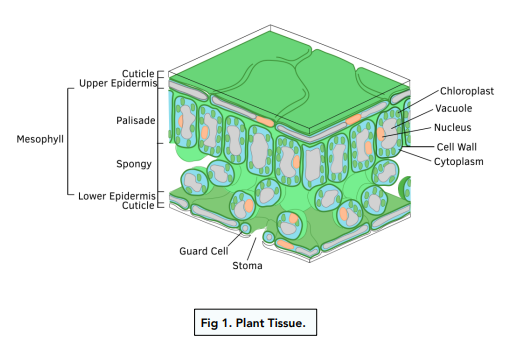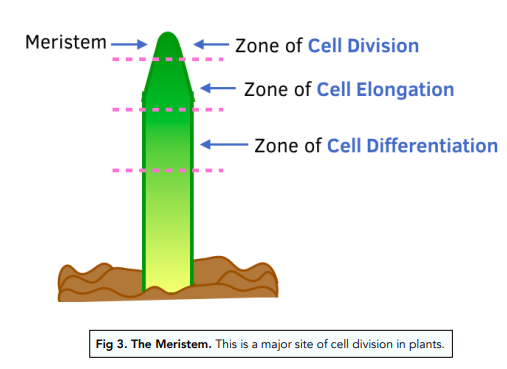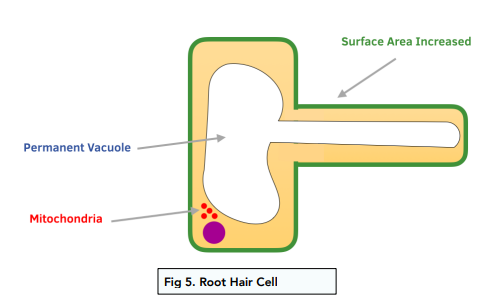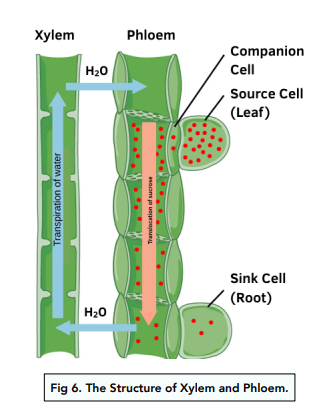Transport in Plants - Structure of a Plant (GCSE Biology)
Structure of a Plant
Plant Tissues
- Plants are covered by epidermal tissue. Epidermal tissue has a waxy cuticle. This covers the plant to decrease water loss by evaporation. Moreover, it is transparent so all light can make its way through.
- Plants have a palisade mesophyll. Photosynthesis occurs in the palisade mesophyll. Therefore, it contains many chloroplasts, which are situated close to the top of the leaf, allowing it to receive the most light possible.
- Plants have a spongy mesophyll. The spongy mesophyll is the area where gas exchange occurs. It also has some chloroplasts. There are gaps between the cells to provide a greater surface area for gas exchange.

Meristem
- Cell division occurs in the meristem. The meristem is a site of cell division in the plant.

Root Hair Cells
- Root hair cells are required for absorption of water and mineral ions in plant cells. Root hair cells are found on the surface of roots, and are involved in absorption of water and mineral ions from the soil, which the plant needs for photosynthesis and survival.
- Root hair cells are adapted to absorption.
- Surface area – root hair cells greatly increase the surface area of the roots, in order to increase the movement of water into the cell.
- Permanent vacuole – speed of osmosis is also increased by the presence of a permanent vacuole in these cells.
- Mitochondria – the root hair cells have many mitochondria, to increase the energy available for the active transport of mineral ions.

Xylem
- Xylem is involved in support and transport in plants. The xylem provides support for the plant and aids the movement of mineral ions and water from the roots to the leaves and stem of the plant.
- The xylem is adapted to support and transport.
- Spiral shape – the spiral shaped buildup of lignin in the xylem cell walls kills the tissue. This then leaves hollow tubes for the water and mineral ions to move through, from the roots upwards.
- Lignin – The lignin dead cells strengthen the xylem, aiding its job as support.
Phloem
- The phloem is involved in transport in plants. Whilst the xylem transports water and mineral ions, the phloem uses energy to transport sucrose and the products of photosynthesis through the plant.
- The phloem is adapted to transport.
- Sieve plate – the phloem cell walls form a sieve plate, as they disintegrate. These sieve plates allow the movement of food.
- Companion cells – phloem is kept alive by companion cells, which have mitochondria for energy transfer. This energy is used to move the food through the phloem.







Still got a question? Leave a comment
Leave a comment